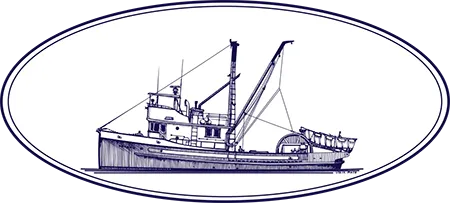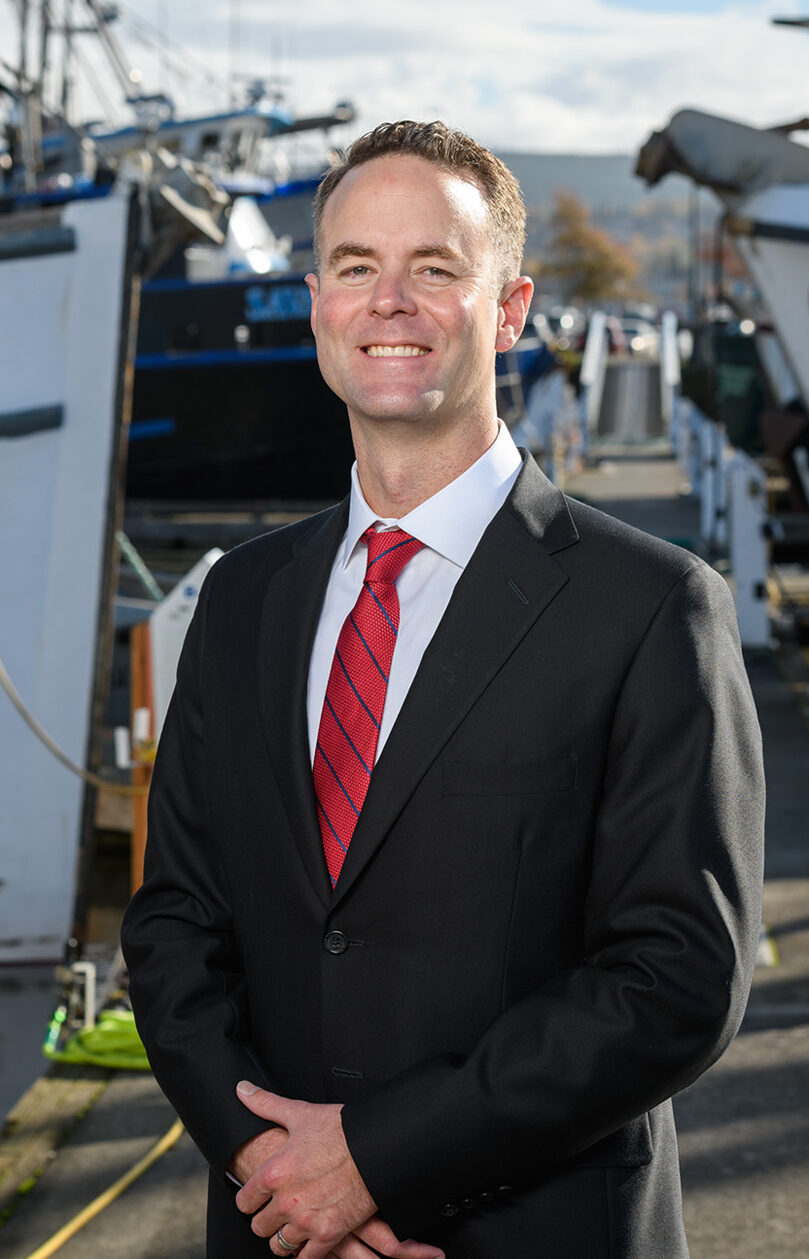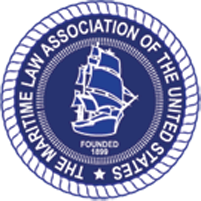A gangway accident can be severely damaging for a victim, leading to serious injuries such as fractures, head trauma, or spinal damage. These injuries can require extensive medical treatment, rehabilitation, and time off work, causing financial strain and emotional distress. Under federal law, victims have the right to be compensated for their injuries.
Maritime Gangway Accident Attorney
If you’ve slipped or tripped and suffered a cracked rib, bone fracture or any other type of injury, you may be eligible for financial compensation. The lawyers at BoatLaw, LLP are experts at maritime law, including gangway accidents.
Call 1 (800) 262-8529 to secure an initial consultation. We litigate maritime cases across the country from our offices in Washington, Oregon, and California. Do not settle for less than what your case is worth.
Information Center
- About Gangways
- Types of Gangway Accidents
- Where Gangway Accidents Happen
- Potential Liable Parties for Gangway Accidents
- Legal Options for a Victim of a Gangway Accident
- Steps to Take After Experiencing a Gangway Accident
- Additional Resources
- Hire a Gangway Accident Lawyer
About Gangways
Gangways provide safe and secure access between a ship and the dock or between two vessels. They come in several designs, including telescopic, folding, and ramp-style gangways, each meant for different types of vessels and docking conditions. Gangways are often equipped with non-slip surfaces and handrails to prevent accidents. Some gangways are even designed to be adjustable, allowing them to accommodate changes in tide levels and ship movements. Modern gangways can be equipped with sensors and automation features to ensure proper alignment and secure attachment to the vessel, improving safety for passengers and crew.
Types of Gangway Accidents
Slips, trips, and falls are the most frequent type of accident, often occurring when the gangway is wet, icy, or poorly maintained. Structural failures, like broken handrails or weak gangway boards, can also lead to accidents. Additionally, accidents happen when the gangway is improperly secured to the vessel or dock, causing it to shift unexpectedly. In some cases, accidents result from a lack of adequate lighting or signs, making it difficult for individuals to see potential hazards.
Causes of Gangway Accidents
The causes of gangway accidents are often linked to negligence or oversight. Poor maintenance is a significant factor, where gangways are not regularly inspected or repaired. Weather conditions, like ice, snow, or rain, can make gangways slippery and dangerous if not appropriately addressed. Incorrect installation or securing of the gangway can lead to it becoming unstable or shifting unexpectedly. Inadequate training or supervision of crew members responsible for setting up and maintaining gangways can also be a contributing factor. Finally, the lack of proper lighting and warning signs can lead to accidents, especially in low-visibility conditions.
Common Types of Victims in Gangway Accident Cases
Victims of gangway accidents are typically workers in the maritime industry, including crew members, dock workers, and contractors. These individuals are often required to use gangways frequently, increasing their risk of accidents. Passengers on commercial vessels, like cruise ships or ferries, can also be victims, especially if they are elderly or have mobility issues. In some cases, even visitors or inspectors who are not regularly exposed to maritime environments can fall victim to gangway accidents.
Where Gangway Accidents Happen
Gangway accidents in Washington, California, Oregon, and Alaska, including surrounding areas, mainly occur in busy port areas and on vessels. In Washington and Oregon, major ports like Seattle and Portland are common sites for these accidents. California’s coastline, featuring ports like Los Angeles and San Francisco, also sees a significant number of gangway accidents. Alaska, known for its fishing industry, has incidents primarily in areas like Anchorage and Kodiak. These states have busy maritime industries, and the frequent movement of goods and people contributes to the occurrence of gangway accidents.
Potential Liable Parties for Gangway Accidents
In gangway accidents, several parties could be held responsible. Shipowners are often liable, especially if the accident was because of poor maintenance or unsafe conditions on the vessel. This includes issues like unstable gangways or lack of safety equipment. If the crew or management failed to properly set up or secure the gangway, they could also be held responsible. In some cases, the manufacturer of the gangway might be liable, particularly if the accident was caused by a defect in the gangway’s design or construction.
Legal Options for a Victim of a Gangway Accident
Victims of gangway accidents have several legal options. Under the Jones Act, injured maritime workers can file negligence claims if their injury was because of their employer’s carelessness. This includes things like failing to maintain the gangway properly or not providing safety equipment.
Unseaworthiness claims are made against the shipowner if the accident occurred because the vessel, including its equipment like gangways, was not safe for its intended use. Maritime workers can claim compensation for lost wages, medical expenses, pain and suffering, and mental anguish resulting from employer negligence or unseaworthiness.
Maintenance and cure claims are another option, allowing workers to receive compensation for medical treatment and living expenses while they recover.
The Longshore and Harbor Workers’ Compensation Act offers a different route for dock workers and other maritime employees injured on or near the water. This act provides compensation for medical care and lost wages, regardless of fault.
When a non-employee passenger is harmed in a gangway accident, or if the accident was caused by a third party (e.g., the manufacturer of the gangway), they may have the right to pursue a general maritime personal injury claim against the party responsible for it. In those claims, victims can seek compensation for medical bills, loss of income, and emotional distress.
In cases of wrongful death, family members can claim damages for loss of financial support, loss of care, and funeral expenses.
However, if the victim is partly at fault for their accident, the total damages under certain Jones Act claims and personal injury claims can be reduced based on their percentage of fault. This is known as comparative negligence, where the compensation is adjusted according to the victim’s contribution to the accident.
In Jones Act negligence cases, gangway accident victims have three years from the date of injury to file a lawsuit. For general maritime law claims of unseaworthiness, the same three-year statute of limitations applies. This means that maritime workers who suffer injuries due to the vessel being unfit have up to three years to seek legal action. Meanwhile, under LHWCA, claims must be filed within one year of the injury.
Steps to Take After Experiencing a Gangway Accident
- Seek Medical Attention: First and foremost, attend to any injuries by getting medical help immediately.
- Report the Accident: Notify your supervisor or the shipowner about the accident as soon as you can.
- Document the Scene: Take the time to document the accident scene and collect contact information from any witnesses.
- Keep Medical Records: Preserve all medical records and receipts connected to the injury. These documents are crucial for any potential legal claims.
Additional Resources
Gangways and Other Means of Access – This resource from OSHA explains safety regulations for gangways and other means of access used in longshoring. It requires that gangways be at least 20 inches wide, securely attached, and maintained in good condition to ensure safety. Handrails, midrails, and adequate lighting are required to prevent accidents.
Gangway Safety in Marine Cargo Handling – This OSHA publication focuses on ensuring gangway safety in marine cargo handling, highlighting the important need for proper rigging and securing of gangways to prevent falls. It outlines specific requirements for gangway width, handrails, and the use of nets for over-water safety. The guide stresses the importance of keeping gangways clear of obstructions and the necessity of immediate reporting of any gangway-related issues to a supervisor to maintain a safe working environment for marine cargo handlers.
Guide to the ABA Accessibility Standards – The U.S. Access Board provides guidelines on accessibility standards for boating facilities, addressing the design of accessible boat slips, gangways, and other components of recreational boating facilities. It focuses on ensuring that boating facilities are accessible to everyone, including those with disabilities. This guide explains how facilities should be constructed or altered to meet these standards.
Hire a Gangway Accident Lawyer
Contact us today to champion your cause and navigate the complexities of maritime claims, ensuring that your rights are fiercely protected and your future is secured.
Call 1 (800) 262-8529 to secure an initial consultation.
We litigate maritime cases across the country from our offices in Alaska, Washington, Oregon, and California. We handle cases that occur in the Pacific Ocean, Bering Sea, Coos Bay, The Columbia River, Grays Harbor, Port Angeles, Lake Tahoe, Dutch Harbor, and the Gulf of Alaska.
Do not settle for less than what your case is worth.











